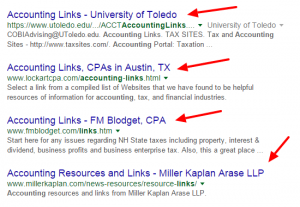Having a professional business valuation can be eye-opening for both the buyer and the seller of a company. In some cases, a seller might have a magic number in mind of what the business is worth only to eat a big spoonful of humble pie when the true valuation is unveiled. A buyer wants to avoid overpaying for a company that doesn’t provide a proper return on investment. Determining the true cash flow of a company, and predicting future cash flow, is where a valuation comes into play.
One of the most important things done in a business valuation is normalizing the financial statements to get to the true cash flow of the company. Normalizing consists of adjusting revenues and expenses so that the financial statements reflect only what would be expected, or “normal,” for the business and the new owner. It also means factoring in non-cash transactions, such as depreciation or amortization. Once you get to the true cash flow of the company, you will have the basis for your valuation.
Why Are Normalized Financial Statements Important?
If you’re considering selling your business, normalized financial statements can play a role beyond just your own peace of mind. Potential buyers want to see what your revenue, expenses, and cash flow look like in an average year. Normalized statements help paint a picture of how the company is performing compared to its peers and can identify strengths and weaknesses.
To get a true representation of your company’s cash flow and the best estimate of future cash flow, it’s important to look for trends. Look at three to five years to see whether cash flow has been increasing, declining, or staying consistent. It drives me crazy when someone says, “Sales were up tremendously last year.” Did you make money? Did you increase cash flow? It’s not about sales and net income; it’s about gross profit and cash flow.
Reading Normalized Financial Statements
Whether you are buying or selling a business, it’s not easy. There are financial and non-financial factors that determine a company’s true value. A very profitable company financially might be a disaster in many non-financial aspects. There is going to be a risk in any acquisition, but learning the correct questions to ask will mitigate that risk as much as possible. Below are three important aspects to consider in normalized financial statements:
1. Owner’s salary
The biggest expense to look at is usually the owner’s salary. If an owner is paying himself $ 1 million but market data demonstrates that a “normal” salary for that position in that industry is $ 150,000, we would want to add $ 850,000 back to the cash flow of the company. If we are valuing the company at four times the cash flow, that adds $ 3.4 million back to the company’s value.
Similarly, I see plenty of situations where the owners do not pay themselves salaries at all. In these situations, you would need to deduct from the cash flow of the company a salary amount that would be considered normal for that position. Because we are lowering the cash flow of the company, we are also lowering the value of that company.
2. Rent
Another expense that usually comes into play is rent. Similar to owner salaries, rent expenses are commonly over- or understated. To determine a normal rent expense, I usually consult with a local real estate broker.
I recently found myself in an awkward situation while valuing a company for a buyer who was seeking a Small Business Administration loan. The current owner was going to lease the building to the buyer for $ 4,000 per month, significantly lowering the value of the business. When I was presenting the valuation, the buyer told me he only planned to spend one month at this location and then move to another location where he would pay only $ 1,500 per month. If the current owner was not going to receive the benefit of the monthly $ 4,000 rent check, the company should be valued at a higher amount. If a normal market rent is $ 1,500 a month, then $ 2,500 — $ 30,000 annually — should be added back into the cash flow. Again, if the company is being valued at four times the cash flow, that amounts to $ 120,000.
3. One-and-dones
Non-recurring expenses, or expenses unrelated to the company’s main operations, are seen as abnormal and should be added to or subtracted from the company’s cash flow. These gains or losses happen one time and don’t repeat, such as building renovations, lawsuits, or the sale of company land.
Non-recurring or personal expenses should be added back to the company’s revenue. I once worked with a company that was involved in a large lawsuit one year. That had never happened before and was not expected to happen again. In this situation, we added the attorney fees back to cash flow, which raised the value of the company. Remember, the trick to valuing a company is to try to value the company’s future cash flow.
I always say that a company’s financial statements are the face of the company. If you’re a business owner, and especially if you’re wanting to sell your company, it’s critical that your financial statements reflect the true cash flow of your company. If there are one-time expenses or extraordinary items, point them out. If you have personal items that a future owner might not incur, list those separately on the financial statement. For buyers, it’s important to have confidence in the cash flow that is being presented. Are there any red flags? Are the financials in shambles? If so, that may be the perfect sign the buyer needs to steer clear of the situation.
Click here to take my company’s Value Builder questionnaire to discover how your company measures up in the eight key value drivers that impact sellability.
Business & Finance Articles on Business 2 Community
(34)
Report Post






